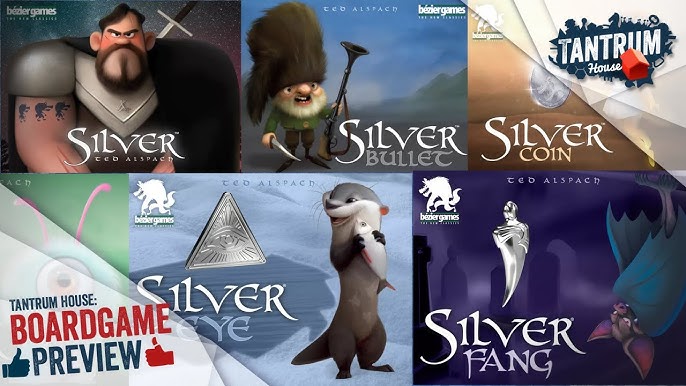What Are Silver Games?
Silver games represent an exciting and unique genre within the broad landscape of gaming. These games are typically characterized by a blend of engaging mechanics, captivating storylines, and visually appealing graphics, all designed to provide players with an immersive experience. The term “silver games” encompasses a wide variety of game types, including adventure titles, role-playing games (RPGs), and strategy games, each distinguished by their own unique features and gameplay elements.
The origins of silver games can be traced back to the early days of digital gaming when developers began exploring creative combinations of mechanics and storytelling. Over time, these games have evolved to incorporate advanced technologies, including high-quality graphics and sophisticated artificial intelligence, which have significantly enhanced the overall gaming experience. As a result, silver games have become synonymous with quality entertainment that appeals to diverse audiences, ranging from casual gamers to seasoned veterans.
One of the defining characteristics of silver games is their ability to evoke emotions and foster connections with players. Many titles in this genre incorporate rich narratives, well-developed characters, and immersive environments that allow gamers to lose themselves within a virtual world. Additionally, the gameplay mechanics often emphasize strategic thinking or collaboration, making these games attractive for players who enjoy not only individual challenges but also the social aspects of gaming.
As silver games continue to rise in popularity, developers are increasingly focusing on their appeal to various demographics, creating games that are accessible to a wider audience. The combination of engaging gameplay and compelling storytelling has solidified silver games as a prominent force in the gaming industry, capturing the attention and imagination of players around the world.
The Evolution of Silver Games
Silver games have seen a remarkable transformation since their inception, reflecting the dynamic nature of both technology and consumer preferences. The origins of this genre can be traced back to the early days of arcade gaming in the late 20th century, where simplistic designs and straightforward gameplay laid the groundwork for future development. Early silver games often featured basic graphics and rudimentary mechanics, appealing primarily to casual gamers seeking entertainment during their leisure time.
As technology advanced, so too did the complexity of silver games. The introduction of home consoles in the 1980s allowed developers to create more intricate designs with richer narratives and engaging gameplay mechanics. Notable releases during this period, such as adventure and puzzle games, began to define what silver gaming would encompass. These titles leveraged the capabilities of new gaming systems while putting an emphasis on storytelling and immersive experiences, thus broadening their appeal.
The 1990s marked a pivotal point in the evolution of silver games. The proliferation of personal computers enabled indie developers to enter the scene, fostering creativity and diversity within the genre. Key milestones such as the advent of 3D graphics and networked multiplayer gaming facilitated significant advancements in game design. As aesthetic qualities improved, player engagement increased, drawing in a wider audience with varying tastes.
In the 21st century, silver games evolved further with the rise of mobile gaming and accessible platforms. This shift allowed a broader demographic to experience silver games, leading to greater innovation and the introduction of new gameplay styles. Industry trends, such as gamification and the incorporation of social elements, have also shaped the landscape, creating a more interactive and community-driven environment. The continuous evolution of silver games highlights their adaptability, ensuring their relevance in an ever-changing entertainment landscape.

Top Silver Games to Try
The world of silver games boasts a rich variety of titles that cater to diverse tastes and preferences among gamers. Whether you are a casual player or a dedicated enthusiast, there is something for everyone. Here, we highlight a selection of outstanding silver games, categorized by genre and gameplay style, while providing insights into their reception and essential features.
For fans of role-playing games (RPGs), “Silver Chronicles: Destiny Unleashed” stands out. This immersive title combines a compelling storyline with intricate character development and exploration. Players can forge their own paths through a beautifully rendered world, encountering unique challenges and captivating quests. This game has garnered acclaim for its engaging narrative and innovative gameplay mechanics.
If you lean towards strategy games, “Silver Siege” offers an exhilarating experience. In this title, players must build their own fortresses while managing resources strategically to fend off enemy sieges. The combination of real-time strategy and tactical planning has made it popular among discerning gamers. Complete with an array of customizable units and expansive maps, this game provides endless hours of engaging content.
For something more action-oriented, “Silver Brawler” provides fast-paced gameplay that appeals to those who enjoy competitive environments. This multiplayer brawler allows players to engage in thrilling combat with friends or strangers online. Its straightforward controls paired with deep fighting mechanics make it accessible yet rewarding for both new and seasoned players.
New releases also join the ranks of must-try silver games. “Echoes of Silver” combines traditional gameplay with modern graphics, presenting a captivating experience that emphasizes storytelling alongside platforming challenges. Players praise its beautiful visuals and engaging plot, marking it as a noteworthy addition to the genre.
To explore these titles, gamers can visit various gaming platforms, including Steam, Epic Games Store, and console-specific sites. Requirements may vary slightly, so it’s advisable to check each game’s specifications to ensure a smooth gaming experience. As you delve into this vibrant realm of silver games, you will undoubtedly find yourself captivated by the creativity and talent that these games showcase.
The Future of Silver Games
The landscape of silver games is poised for notable transformations as advancements in technology and shifts in player preferences continue to influence the industry. One of the most significant trends on the horizon is the integration of virtual reality (VR) and augmented reality (AR) into silver gaming experiences. These technologies promise to elevate player immersion and interactivity to unprecedented levels, allowing users to engage with their favorite silver games in dynamic, realistic environments. As VR and AR equipment become more accessible and affordable, it is likely that developers will explore innovative ways to incorporate these mediums, leading to remarkable gameplay experiences.
In addition to technological advancements, game design innovations will play a crucial role in shaping the future of silver games. Emerging development tools, such as artificial intelligence (AI), are expected to enable the creation of more adaptive and personalized gaming experiences. Such technology could allow silver games to respond to players in real time, adjusting challenges and narratives based on individual gameplay styles. This level of customization could attract a broader audience and deepen player engagement, thereby enhancing the overall allure of the genre.
The demographics of gamers are also shifting, with younger audiences becoming increasingly prominent in the silver games community. This demographic shift may lead to a surge in demand for content that resonates with their interests and lifestyles. Consequently, developers could prioritize inclusive narratives, diverse characters, and community-driven content that reflects the values of a modern audience. As players become more connected through online platforms, the importance of community engagement in the silver games ecosystem will undoubtedly rise. Collaborative features, user-generated content, and social gaming experiences are anticipated to contribute positively to player retention and satisfaction.
Overall, the future of silver games appears promising, characterized by technological advancements, innovative design, and heightened community involvement. These factors will likely combine to create a rich and sustainable environment for both developers and players alike, ensuring the genre’s evolution and longevity in the years to come.














Leave a Reply